Legacy of domestic violence handed from one generation to the next
This special report was underwritten in part with a grant from the University of Southern California's Annenberg Center for Health Journalism and its 2021 Domestic Violence Impact Reporting Fund.
Other parts of this story include:
Part 2: How a Cincinnati domestic violence survivor got the help she needed to break the cycle by Cameron Knight
Part 3: Domestic violence: Teaching kids skills to stay safe in relationships, prevent abuse by Terry Demio
How The Enquirer uncovered family histories of domestic violence in Hamilton County by Quinlan Bentley
What are adverse childhood experiences? Seeing domestic violence is one of them. by Anne Saker
Watch: Enquirer hosts conversation on domestic violence
Hand-signal rescue of Kentucky girl shows 'power of a bystander'
Murder case in Enquirer's domestic-violence series ends with 15-to-life prison sentence

Cincinnati Enquirer
From its start, the novel coronavirus pandemic worsened the public health crisis of domestic violence, and symptoms were plain in the rise in murders and the calls for help from survivors and their children.
Beyond the immediate suffering, though, an Enquirer analysis of one month's court docket reveals the deep root of domestic violence, its generational legacy of trauma, for families and for the community.
In April 2020, 161 men and women in Hamilton County were charged with misdemeanor domestic violence against 165 others. The Enquirer found that of those 326 people, nearly a quarter of the offenders and of the survivors knew in childhood or their teen years a relative, often a parent, who had been arrested for domestic violence.
Of the 161 offenders in The Enquirer analysis, 71 had previous arrests. Yet 86% of the cases were dismissed because the survivor did not appear in court to testify against the offender. Twenty-one were arrested on new domestic violence charges after April 2020.
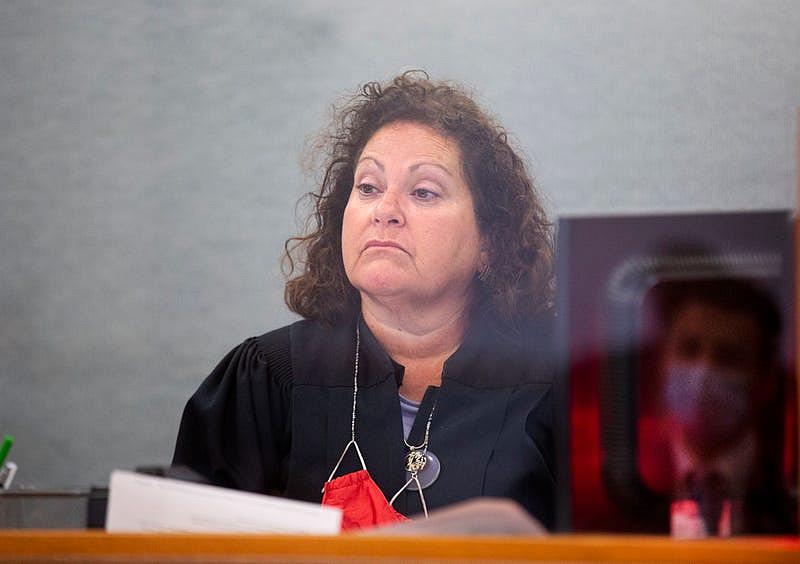
Overwhelmed criminal justice
Judge Heather Russell of the Hamilton County Municipal Court said she was not surprised by the dismissal rate. She's been on the bench for 20 years, and for nearly 20 before that, she was the county's domestic violence prosecutor. Russell has seen the power of the cycle. For a survivor, fear of the offender can surpass the fear of a subpoena.
When a case before her does end in a conviction, “I really try to and break through, to explain all this. ‘Do you want your son to learn this tradition from you? Is this what you want for yourself?’
"I really feel sometimes that it’s the first time someone ever asked them that," Russell said.
April 2020 wasn't a breakthrough month for domestic violence. The 161 cases hit the monthly average from April 2019 until April 2021. But from March through September, case counts have risen above April 2020 in four months and touched a two-year high in July at 205.
Still, the number of court cases underestimates the incidence. The U.S. Justice Department estimates that only about 56% of domestic violence is reported to the police.
Sometimes, domestic violence jumps over the misdemeanor to murder. In April 2020, six women were murdered in Cincinnati, more than all of 2019. Eighteen months later, on Oct. 5, the nonprofit Ohio Domestic Violence Network reported that homicides jumped 62% during the pandemic.
Officials at advocacy agencies say record numbers of survivors have sought help during the pandemic, busting the budget of the shelter-providing YWCA of Greater Cincinnati and straining other resources.
The marker for Patricia Woods, 24, at Cincinnati's Vine Street Hill Cemetery Sept. 30, 2021. She was killed April 17, 2020, in her Westwood apartment while her children, Kayden, then 5, and Kay-Lia, then 14 months, slept. Kayden fled to neighbors for help. Marcus Reed, who Woods was dating, is charged with aggravated murder. LIZ DUFOUR/THE ENQUIRER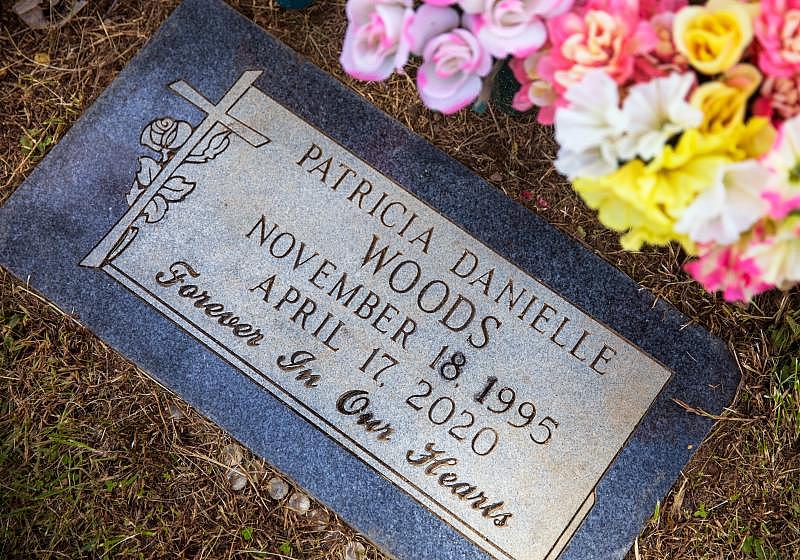
Advocates say an already overwhelmed criminal justice system and an underfunded social safety net alone cannot bring down the pandemic spike in cases, much less the overall social problem. They say what's needed are solutions that are smart about the health effects of the trauma. One small step on that road is a partnership between Cincinnati police and the advocacy group Women Helping Women that dispatches an advocate to the scene of a domestic violence call to assist the survivor.
“If COVID-19 taught us anything, it is that we have to address gender-based violence," said Kristin Shrimplin, president and CEO of Women Helping Women. Without a more widespread awareness of the impact of trauma caused by domestic violence, the abuse rises, arrests go up, and the community deals with the consequences, she said. "That is heartbreaking for all of
us."
Generations of trauma
The generational legacy of domestic violence in The Enquirer's findings echoes an August 2020 report by the nonprofit Health Policy Institute of Ohio. In that survey, more than a quarter of Ohioans said they had been exposed to domestic violence as children.
The institute has been concentrating research on events, such as domestic violence, that the U.S. Centers for Disease Control and Prevention among others call adverse childhood experiences. Science is learning how psychological trauma in childhood shapes an adult's behavior and health, in body and mind.
Repeated trauma from adverse childhood experiences can induce toxic stress, overriding a child's ability to regulate reactions to other people and environments. That stress can travel into adulthood.
“What happens in childhood does not stay in childhood,” said Dr. Andrew Garner, a Cleveland pediatrician and early development expert. “We will not be able to ‘punish’ our way out of these intergenerational cycles. We need restorative practices to help parents and caregivers in order to help their kids … and the next generation of parents and caregivers.”
Tracey Jones visits her daughter's grave, Sept. 26, 2021. Patricia Woods, 24, was killed April 17, 2020, in what police believe was a domestic violence homicide. "How does a mom get over the death of her daughter? I just don't know how to do it." Jones now has custody of Woods’ two children. LIZ DUFOUR/THE ENQUIRER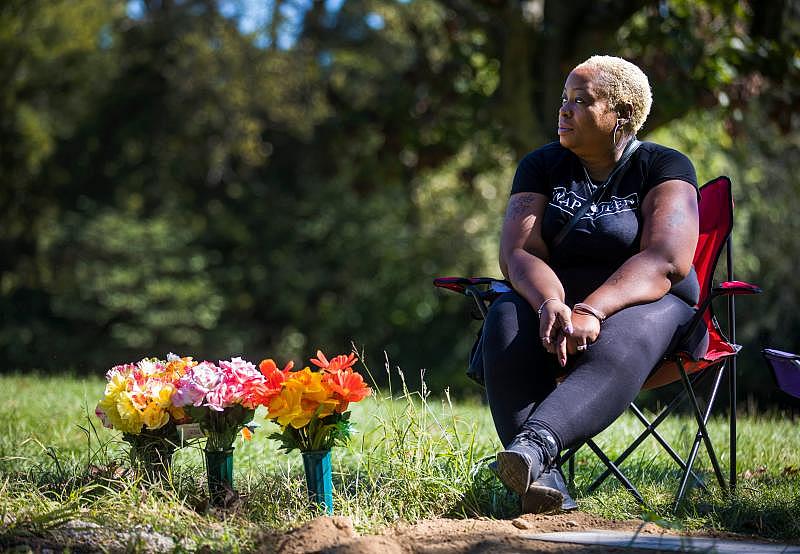
Childhood trauma is pervasive in Ohio. More than 61% of residents reported that they had endured abuse or neglect or divorce as children, the Health Policy Institute found.
The more adverse experiences a child has, the greater the risk that the traumatized adult makes poor health choices as a way to soothe trauma. For example, the institute found nearly one-third of Ohio smokers had at least two adverse childhood experiences. Then consider that lung cancer is the No. 1 cancer killer in Ohio and Kentucky.
Today, scientists see the effects of trauma on the brain and the body’s building blocks. One 2018 review of studies found indications that trauma can change the expression of a gene that plays a role in mental health. Another study on women who were pregnant when exposed to the Sept. 11, 2001, terror attacks suggests the children inherited lower levels of the stress hormone cortisol.
A 2018 study at Cincinnati Children's Hospital Medical Center says a parent's adverse childhood experience can delay development in a child before age 2.
"Does that mean that all kids who witness intimate partner violence will be perpetrators and/ or victims themselves? Certainly not," said Garner. "But having that experience may make it more likely that they themselves will have issues with emotional regulation and result in any of a number of dysfunctions," such as doing poorly in school or on the job, having problems sustaining friendships and picking up bad health habits.
MICHAEL NYERGES, CINCINNATI ENQUIRER
The Health Policy Institute of Ohio estimated that avoiding even 10% of costs arising from adverse childhood experiences such as medical bills and lost work could save Ohio more than $1 billion a year.
Reem Aly, the institute’s vice president, said the organization’s long study of the overall poor health of Ohioans showed that at the foundation lay adverse childhood experiences and their generational legacy.
“Health doesn’t just happen,” Aly said. “It’s over the life course, and it compounds over time. There are issues older Ohioans faced as children that could have been prevented or managed. … Using (adverse childhood experiences) as a measure, we rank very poorly compared to other states.”
The intergenerational legacy of domestic violence landed heavily in April 2020 when six women were murdered in the city of Cincinnati, more than in all of 2019. In three of the murders, the men charged with the crime were current or former intimate partners. One is Marcus Reed, 30, due to go on trial next month for the murder of Patricia Woods, 24, a Westwood mother of two.
Kayden Allen, 7, and sister, Kay-Lia McCree, 2, were at home when their mother Patricia Woods was murdered April 17, 2020. Kayden ran to a neighbor for help. Marcus Reed, charged with aggravated murder, is set to go to trial in November LIZ DUFOUR/THE ENQUIRER
Before he was 13, Reed's father had been to prison twice. By early 2020, when Reed, 30, met and briefly dated Woods, his own criminal record included two domestic violence arrests, both dismissed.
But Woods "did not feel threatened by this guy whatsoever,” said Tracey Jones, her mother. “I would have laid down my life on that because I know my daughter, and I know how she feels about her own kids. She would never put herself or them in any type of danger like that. She did not see this coming for herself at all.”
On the morning of April 17, 2020, the Woods children heard a loud boom in their apartment. Her 5-year-old son found Woods' body at the front door. Jones said the boy “actually spoke to the Marcus Reed guy before he left and said 'can you please get help for my mommy'. And he said no.”
Jones now cares for her grandchildren. “Even more so now, we’re trying to do things as a family because we know, honey, how that saying goes, tomorrow isn’t promised to anyone.”
The toll of domestic violence
LIZ DUFOUR, CINCINNATI ENQUIRER
Survivor advocates under financial stress
Survivor advocates say they regularly see handed-down trauma in their work. They believe trauma has deepened because the pandemic weakened the thin layer of services for survivors and their children, as well as complicating the police response to domestic violence.
Debbie Brooks, executive vice president of the YWCA of Greater Cincinnati, said the pandemic “put more stress on an already stressed family dynamic, with people losing jobs, and being isolated, and being fearful to leave violent situations to come into a shelter where they might contract a deadly disease.”
Richard Byes, a YWCA facilitator, leads a class for men who have been court-appointed to participate in a 20-week Transform class for domestic violence offenders on Aug. 26, 2021. LIZ DUFOUR/THE ENQUIRER
In 2018, a key source of federal money went dry with the lapsing of the Violence Against Women Act, and Ohio lost $7.7 million. The legislature recently resupplied $7.5 million to the statewide Ohio Domestic Violence Network for two years, and, "while we greatly appreciate it," said network Policy Director Micaela Deming, "it doesn’t cover the loss over the last couple of years."
The YWCA is the only agency in Hamilton County providing housing for survivors of domestic violence. With shelters closed under the public health orders, the YWCA has paid for survivors to stay in hotels, adding an extra $65,000 a month to shelter expenses, Brooks said.
The YWCA served nearly double the number of survivors it had projected for 2020, and Brooks said the number of people seeking help has continued to rise in 2021. Economic pressures meant most survivors arrived with no income and a long list of overdue bills, she said, and the average stay went from 30 to 56 days.
Financial stress also has hit those dealing with the causes underlying domestic violence. Dr. Robert Shapiro, a pediatrician at Cincinnati Children's Hospital Medical Center, is a founder of Joining Forces for Children, a decade-old network of about 30 nonprofits that are studying the impact of adverse childhood experiences. “The pandemic has eaten into a lot of our funding” to the point of nearly shutting it off, he said.
The scene March 20, 2020, where Terry Blankenship, fleeing Elmwood Place police on Interstate 275, rammed his truck into Springdale police officer Kaia Grant, killing her. In April 2021, Blankenship was sentenced to life in prison for aggravated murder. FOX19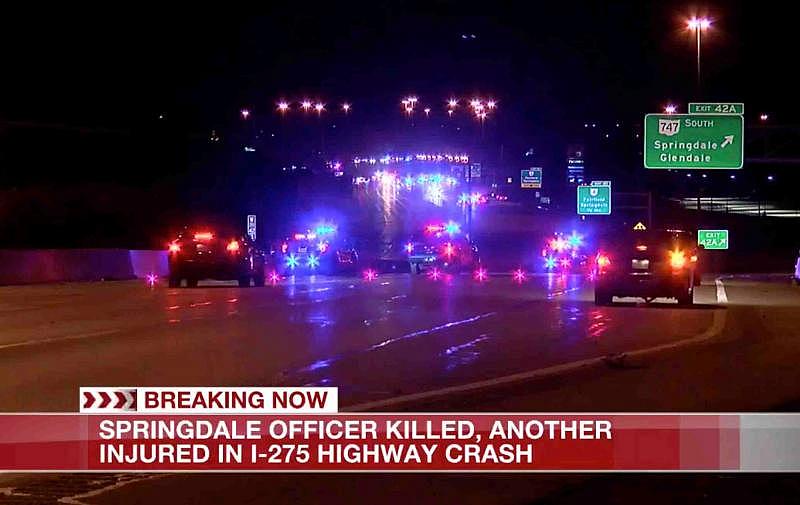
When Terry Blankenship took the life of Officer Kaia Grant
One case from The Enquirer's study month of April 2020 illustrates that a generational legacy of domestic violence does not stay confined to a home. The community pays a price when family trauma metastasizes. It's with that knowledge that police officers brace themselves when answering a domestic violence call.
On the night of March 20, 2020, Terry Blankenship of Blanchester broke into his ex-wife’s home, assaulted her boyfriend then fled in his truck with a gun. Blankenship had three previous arrests for domestic violence, all dismissed. He also had the legacy of his father, convicted in 1999 of domestic violence in Clermont County for strangling his third wife. The elder Blankenship skipped court-ordered anger-management classes, moved to Kentucky and remarried. He died in 2020.
Springdale police officer Kaia Grant, 33, was killed in the line of duty March 21, 2020 as she set up a barricade on Interstate 275. Terry Blankenship was fleeing police and he purposely ran into her, killing her at the scene. He was convicted of murder and is serving life in prison. SPRINGDALE POLICE DEPARTMENT
As night fell March 21, Terry Blankenship turned up 35 miles west of Blanchester in the Cincinnati suburb of Elmwood Place. Police pursued him onto Interstate 275. Near the interchange with state Route 4, Springdale police Officer Kaia Grant, 37, finished setting up a barricade.
She had been a stellar student at Wyoming High School where her tact and ease with people led her teachers to imagine that one day she would become a diplomat.
On I-275, Grant crouched behind her cruiser as Blankenship came out of the darkness. He then aimed his truck at Grant, struck and killed her. His truck stopped at last, Blankenship attempted suicide, but was treated for his injuries and recovered. In April 2020, he was charged with aggravated murder. A year later, he pleaded guilty and went to prison for 30 years.
The trauma of Grant's death endures. Her mother declined an interview, as did the Springdale police chief. But he did say one thing. In her seven years on the force, Grant distinguished herself on the one call that every officer dreads, the chief said. The temperature in those domestic violence situations can run pretty high, and Grant was so calm and diplomatic, she always found a way to bring it down.
Image
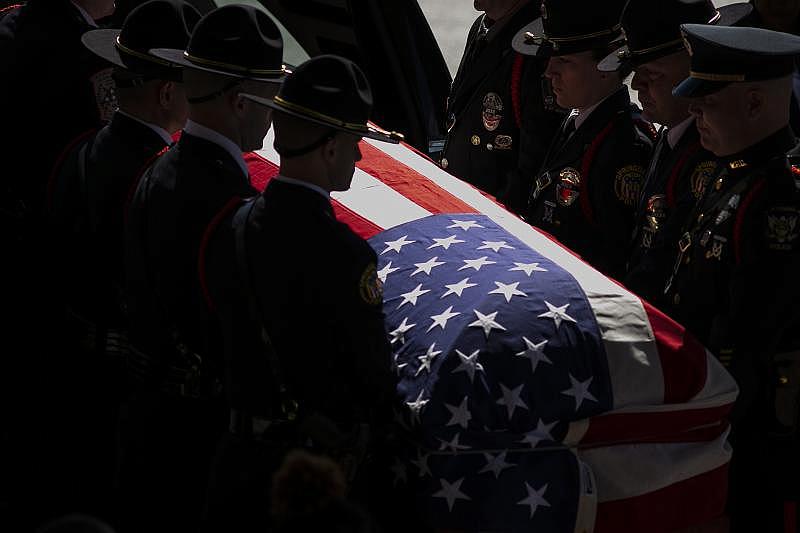
Springdale Police Department officers lift the casket of fellow officer Kaia Grant from the hearse for her funeral service at Vineyard Church in Springdale, March 29, 2020. Grant was killed in the line of duty March 21, 2020. AMANDA ROSSMANN/THE ENQUIRER

Springdale Police Department officers lift the casket of fellow officer Kaia Grant from the hearse for her funeral service at Vineyard Church in Springdale, March 29, 2020. Grant was killed in the line of duty March 21, 2020. AMANDA ROSSMANN/THE ENQUIRER
Contributing: Staff writer Quinlan Bentley and visual journalist Liz Dufour
Beyond the Bruises series
A three-part Enquirer report on the reality and legacy of domestic violence and what's being done about it in the Cincinnati region.
Part one: An Enquirer analysis of court dockets and the lives tied to them reveals : about one in four perpetrators and survivors knew at least one relative arrested for domestic violence.
Part two: After a death threat, a survivor found the cops at her door - along with an advocate to help her make a plan for her future safety.
Coming Oct. 28
Part three: Across the Cincinnati region and Northern Kentucky, students get lessons that can end the cycle of relationship violence and help identify red-flag behaviors against them.
[This article was originally published by Cincinnati.com.]

